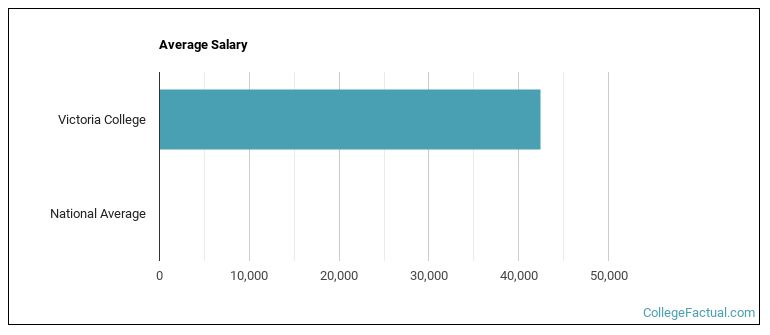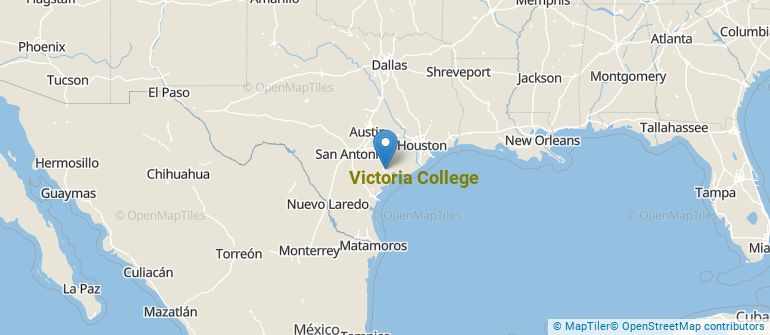 by our College Data Analytics Team
by our College Data Analytics Team
In its yearly rankings, College Factual analyzes over 2,000 colleges and universities to determine which ones are the best in a variety of categories, such as overall value, quality, diversity, which schools are the best for each major, and much more.
Victoria College was awarded 11 badges in the 2025 rankings. The highest ranked major at the school is engineering technologies.
Explore the best ranked schools for the programs you are most interested in.
According to College Factual's 2025 analysis, Victoria College is ranked #1,162 out of 2,152 schools in the nation that were analyzed for overall quality.
Victoria College also holds the #43 spot on the Best Colleges in Texas ranking.
As long as you meet basic requirements, you should not have any trouble getting into Victoria College since the school has an open admissions policy. Still, be sure to submit any requested materials and that your application is completed in full.
The student to faculty ratio at Victoria College is about average at 13 to 1. This ratio is often used to gauge how many students might be in an average class and how much time professors will have to spend with their students on an individual level. The national average for this metric is 15 to 1.
When estimating how much access students will have to their teachers, some people like to look at what percentage of faculty members are full time. This is because part-time teachers may not have as much time to spend on campus as their full-time counterparts.
The full-time faculty percentage at Victoria College is 30%. This is lower than the national average of 47%.
The freshmen retention rate tells us what percentage of first-year, full-time students choose to continue on to their sophomore year at a particular school. The rate at Victoria College is 64%, which is about average when compared to the national rate of 68%.
During the 2017-2018 academic year, there were 3,274 undergraduates at Victoria College with 860 being full-time and 2,414 being part-time.
| $0-30 K | $30K-48K | $48-75 | $75-110K | $110K + |
|---|---|---|---|---|
| $3,759 | $5,535 | $6,367 | $10,347 | $10,811 |
The net price is calculated by adding tuition, room, board and other costs and subtracting financial aid.Note that the net price is typically less than the published for a school. For more information on the sticker price of Victoria College, see our tuition and fees and room and board pages.
While almost two-thirds of students nationwide take out loans to pay for college, the percentage may be quite different for the school you plan on attending. At Victoria College, approximately 7% of students took out student loans averaging $4,089 a year. That adds up to $16,356 over four years for those students.

Get more details about the location of Victoria College.

Contact details for Victoria College are given below.
| Contact Details | |
|---|---|
| Address: | 2200 E Red River, Victoria, TX 77901 |
| Phone: | 361-573-3291 |
| Website: | www.victoriacollege.edu/ |
| Most Popular Majors | Bachelor’s Degrees | Average Salary of Graduates |
|---|---|---|
| Interdisciplinary Studies | 174 | NA |
| Electronics Engineering Technology | 113 | NA |
| Nursing | 68 | NA |
| Practical Nursing & Nursing Assistants | 67 | NA |
| Allied Health Professions | 50 | NA |
| Business Administration & Management | 41 | NA |
| Physical Science Technicians | 39 | NA |
| Precision Metal Working | 18 | NA |
| Allied Health & Medical Assisting Services | 14 | NA |
| Computer Systems Networking | 13 | NA |
Online courses area a great option for busy, working students as well as for those who have scheduling conflicts and want to study on their own time. As time goes by, expect to see more and more online learning options become available.
In 2022-2023, 1,925 students took at least one online class at Victoria College. This is a decrease from the 2,161 students who took online classes the previous year.
| Year | Took at Least One Online Class | Took All Classes Online |
|---|---|---|
| 2022-2023 | 1,925 | 914 |
| 2021-2022 | 2,161 | 1,033 |
| 2020-2021 | 3,162 | 2,081 |
| 2018-2019 | 1,709 | 853 |
Footnotes
*The racial-ethnic minorities count is calculated by taking the total number of students and subtracting white students, international students, and students whose race/ethnicity was unknown. This number is then divided by the total number of students at the school to obtain the racial-ethnic minorities percentage.
References
More about our data sources and methodologies.